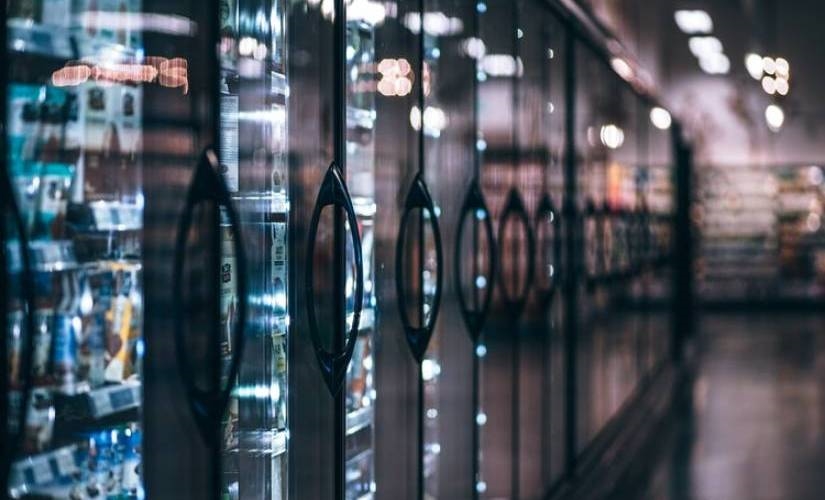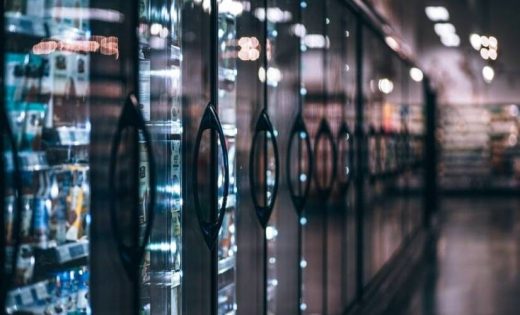How IoT Will Transform Cold Chain Logistics Forever
How IoT Will Transform Cold Chain Logistics Forever

The Internet of Things (IoT) promises increased visibility and control for the entire supply chain. Meaning, that visibility and control will cover the cold chain logistics, too. Through real-time data, IoT will allow for faster and more relevant reactions as well as much more informed decisions. The problem, however, is that most IoT platforms are not considered to be ready for primetime. IoT will transform cold chain logistics forever.
Cold chain providers are still utilizing conventional technologies like onboard temperature recorders.
Gartner’s Hype Cycle for Emerging Technologies report posits that IoT is still another five to 10 years away from maturity. Although these solutions have been used for years and even decades, there are some glaring issues. For instance, onboard systems tend to provide alerts only after a problem has occurred.
It then becomes a matter of reacting and fixing a real issue, rather than deploying preventive maintenance to head these events off at the pass. That might be suitable for traditional supply chain operations, but in the cold chain, where proper temperatures and conditions must be maintained continuously. If the cold chain is not maintained, it can lead to compromised goods.
Reaction times must be near-instant, which means any problems that arise must be remedied quickly and efficiently. It requires constant vigilance in the form of strategic monitoring all along the cold chain. That’s precisely where IoT can provide the most benefits: through active and real-time reporting. Industry 4.0 is a massive part of that, as the industry evolves thanks to improved data exchange and automation efficiency.
The Importance of Cold Chain Visibility
Rightfully described as “the hidden lifeline of the modern world,” the cold chain is necessary to distribute certain perishable and fresh goods. In order to prevent food and item loss, as well as to stop the spread of foodborne illness, it’s necessary to establish a transparent and visible operation. In the cold chain, this requirement is more important than ever.
Suppliers must be able to identify potential errors or contamination points, and there must be tools and systems in place to take action.
Meat that has been exposed to warm or room temperatures — when it’s meant to remain frozen — should be pulled immediately before even reaching store shelves. If any units do reach the end of the line, it’s just as important to be able to track their whereabouts and remove them from public access.
Going even further, if the goods are sold, then the proper warnings need to go out to customers. None of this can happen without the appropriate visibility mechanics in place. The IoT does more than offer this control — it also improves visibility control considerably.
The technology offers a boost in food safety compliance, logistics efficiency and monitoring, data analytics, and much more.
Information is flowing in at any given time, which can be used to analyze various conditions or events and respond accordingly. An alarming 40 percent of the nation’s food is lost during the journey from field to fork. The kind of real-time visibility that IoT offers can be used to reduce this problem, if not eliminate it outright.
IoT sensors can be used to monitor temperatures for various foods and goods.
When temperatures shift outside of a healthy range, alerts are sent to the necessary players. If the goods are stored in a warehouse, property managers can either deal with potential refrigeration problems or relocate the goods to preserve them. If the products are on a transport vehicle when the alerts come in, the driver can deal with the problem sooner.
IoT can give radio for support and shift the goods to another, more suitable vehicle. The critical point is that these events are set into motion almost as soon as a problem is identified, further mitigating the potential for contamination or spoilage and leaving the opportunity for higher profits by reducing the loss of product.
The pharmaceutical industry has a similar problem. About 20 percent of drugs or temperature-sensitive products are ruined.
Because of cold chain errors and malfunctions, much of the pharmaceutical industry has product loss. When there is an unknown — unmonitored product — this loss is often felt by the pharmacy that is delivering the product to you. You may argue that proper monitoring is more crucial for drugs and medical supplies, as they are often limited in quantity. Pharmaceutical must reach their destinations in a suitable amount of time. Doctors and patients are often waiting for these supplies.
The best part is that the IoT can be outfitted to work with a variety of existing devices and hardware, including legacy systems.
For example, several different types of industrial chillers, from air-cooled to water-cooled, can be outfitted with IoT upgrades. An essential consideration for getting the maximum value out of a chiller which might last for 20 years or more. Water-cooled units, for example, can be outfitted with sensors that monitor and report the cooling system temperatures alongside internal refrigerator temps.
Comparatively, water temperatures aren’t necessary to know with air-cooled units so that that particular system can be customized accordingly.
IoT hardware and sensors are incredibly versatile and capable of outputting highly relevant data streams. In the end, the IoT offers a massive increase in visibility and transparency. That alone has the potential to vastly transform the state of cold chain logistics and operations. Some of the most common problems in the general supply chain stem from a lack of visibility or relevant information.
IoT Can Enable and Enhance Automation
To automate a process or operation, you need robust streams of data available about what’s happening, what specific events and actions will lead to, and how a system should respond. AI and machine learning, in particular, are all about incoming streams of information, real-time being the best possible type. Machine learning uses this data to learn over time as it ingests more and more experiential stats and content.
IoT can enable automation in this way by providing more pertinent streams of data about performance, trends, and experiences. It’s cyclical in nature, as logistics can be improved considerably with the help of AI, while AI is fed data thanks to IoT.
Opportunity through predictive modeling and analytics.
With enough information and the right tools — AI being the prime example — data can be compiled into predictive visualizations. It allows for teams to react before events happen, as opposed to during or after. More importantly, predictive models can help discern the outcome for various decisions or events, which can shape long-term operations. If you know something isn’t going to work out thanks to predictive modeling; you can choose an alternate, more successful approach.
In the cold chain, predictive modeling can be used to assess and plan for market demands and various other situations. A shortage of a particular food or supply, for example, can be scheduled for weeks, if not months, in advance.
IoT Has the Potential to Change Cold Chain Logistics Forever
Mature or not, bringing IoT into the cold chain can help introduce a variety of benefits, from increased efficiency to greater transparency and visibility.
As a result, this nets cold chain players more control over what’s happening with specific goods. Imagine being able to react in real-time to transport issues, refrigeration problems in a warehouse, or even remote issues a partner is having. The robust and streamlined information that IoT sensors and devices offer will help to transform the current state of cold chain logistics.
The end goal is to reduce contamination, prevent the spread of foodborne illness, improve customer experiences through fresh, high-quality goods, and, of course, lower associated waste and risk costs.
Temperature, climate, and humidity control are all ongoing processes that must be continually monitored throughout the scope of any operation. You cannot suddenly allow goods to be exposed to lower temperatures because of a system or hardware malfunction.
It’s evident that not responding soon enough to certain events can have dire consequences. IoT paves the way for real-time and preventive measures, even introducing the potential for predictive solutions. If that’s not enough to get you on board with the idea of using the technology, there’s not much else that will.
The post How IoT Will Transform Cold Chain Logistics Forever appeared first on ReadWrite.
(28)


